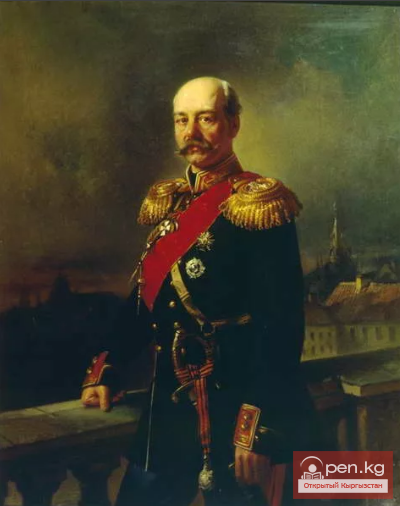
Adjutant General of the Russian Army Konstantin Petrovich Kaufman
The name of another military figure, who not only conquered a significant part of Turkestan but also the minds of Orientalists, is quite well-known. We are talking about Adjutant General of the Russian Army Konstantin Petrovich Kaufman. He is one of the graduates of the Nikolaev Engineering School (now the Military Engineering Technical University). Since 1844, he served in the Caucasus. During the Eastern War of 1853-1856, commanding the Caucasian Sapper Battalion, he participated in the siege and storming of Kars and, on the orders of General Muravyov, concluded the capitulation for the surrender of this fortress with the English commissioner Williams.
In 1861, he was appointed director of the office of the Ministry of War. Here, Kaufman faced a considerable amount of work, as during this time the issue of introducing a military district system was being developed; simultaneously, he participated in various committees regarding the ongoing reforms of the entire military organization.
In 1865, he was appointed Governor-General of the Northwestern Territory and Commander of the Troops of the Vilna Military District. In July 1867, he was appointed Commander of the Troops of the Turkestan Military District, where his activities, in addition to numerous defeats inflicted on the Bukharians, Khivans, and Kokandis, were marked by the capture of Samarkand (1868) and the conquest of Khiva (1873). Awarded the Order of St. George of the 2nd class for the latter feat, Kaufman was promoted to engineer-general in 1874.
In 1875, he conquered the Kokand Khanate, from which the Fergana Region was formed. The Turkestan Governor-Generalship and the city of Tashkent owe much to K. P. von Kaufman, including the establishment of the City Duma and the organization of the Public Library (now the National Library of Uzbekistan named after Alisher Navoi).
Gerasim Alekseevich Kolpakovskiy - the first researcher of the archaeological mysteries of Issyk-Kul













































